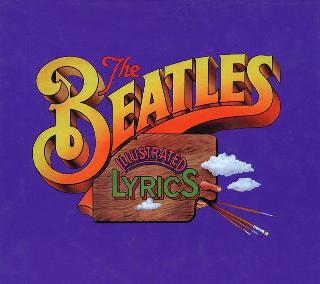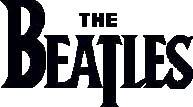Index
Home
Vorige
Oh! Darling
Composer(s) : Lennon and McCartney
Year : 1969
Chords/Tabs: Oh! Darling
Notes on "Oh! Darling" (OD)
KEY A Major
METER 4/4 (12/8)
FORM Intro -> Verse -> Verse -> Bridge ->
Verse -> Bridge -> Verse -> Outro (w/complete ending)
GENERAL POINTS OF INTEREST
Style and Form
- Paul gives us yet another one of those uncanny Beatlesque stylistic
hybrids with this song: the emotional ethos of slow and heavy blues mixed
with the form and chord progressions of the slow, wall climbing doo-wop
oldie. It's kind of like Clapton's "Did You Ever Love a Woman" (from
the Layla album, and coincidentally a song smoldering with Eric's
obsession at the time with Mrs. Patti Boyd Harrison, but I digress)
crossed with "In the Still of the Night." Or closer to home, it's
"Yer Blues" meets up with
"This Boy."
- There is a surpringly small number of songs in slow ternary meter in
the complete Beatles songbook. Other than the two I already mentioned
in the previous paragraph I can think of only
"Yes It Is" and *maybe*
"Norwegian Wood."
- For all of its bluesy flavor, the fact remains that the form here is
the classic pop two-bridge model with only a single verse separating the
the bridges. None of the sections matches the length or chord progression
of traditional 12-bar blues.
- As a point of formal curiosity you'll note that this song has virtually
no intro or outro.
Melody and Harmony
- The tune is made bluesy by the heavy stress given to the flat 3rd and
to a lesser extent flat 7th. Scale degree 4 is conspicuously given short
shrift. It's avoided entirely in the verse, and shows up in the bridge
only at the end of each phrase; as an appogiatura in the first case
and as a neighbor tone in the second case.
- The verse covers a full octave's range, but all stops are pulled out
for the bridge, where things peak out successively at high C and C#.
- The relatively large chord set includes I, ii (as well as V-of-V), IV,
V, and VI.
- There's also a very funky chord used in the bridge that is most
conventiently labelled as an F7 ("flat VI"), but which your Harmony
102 textbook (they don't cover this chord in Harmony 101 :-)) would
feel more precise in labelling a "German (Augmented) Sixth."
Arrangement
- The production is relatively a wall of sound by Beatles standards,
relying more on local details, rather than formal layering, to add
a dimension of textural variety.
- The intensity of Paul's lead vocal and the extent of his personal
preparations for it are legendary. The backing track of piano, guitar,
drums and bass does a fine job of matching forces with that vocal.
- Some interesting details:
- The guitar provides aggresive "chops" on the off beats in the verses;
playing for some reason with especial vehemence in measure 4 of verse 2.
This switches to an arpeggiated figurate that places guitar notes on each
8th note of triplet backbeat for the bridges.
- Macca's lead vocal is single tracked in verses, and has heavy echo
applied (and may also be automatica double tracking) in the bridges.
His performance gets noticeably looser in the second half of the song,
varying the tune in the final pair of verses, and adding a spoken
obligato of "believe me darling"-plus-scream in the second bridge
and final verse.
- The drums momentarily shift to playing rapid triplets per triplet
eighth note beat in the lead-in to the bridge. Do I hear an echo
of "Come Together?"
- A gentle wash of backing vocals appearing with similar material
in all four verses, but enters in a different measure each time.
Check it out; the voices enter in the following measure of each
successive verse: 4, 2, 3, 1.
- One of the secondary traits of the slow ternary style used here is
long dramatic pauses in the lead vocal that routinely fall either between
phrases or at end of sections. In a more purely bluesy context (look back
at the Clapton song referenced up top) you're most likely to see those
breaks filled in by elaborate solo instrumental commentary. Macca, given
the same opportunity, opts for heavy scalar riffs in the bassline; which
simply goes to show that each artist exploits whatever it is that s/he's
got in particular.
SECTION-BY-SECTION WALKTHROUGH
Intro
- The minimalistic intro consists of a single chord which is played
as if on the 3rd slow beat of the opening measure. I can just hear them
in the studio counting: one, two, chord, Oh ..:"
1 2 3 4
|- E #5 |
A: V
- The augmented chord on E functions here just the way a similar augmented
V chord did at the end of the bridge in
"From Me To You." Be sure to spell
the chord E - G# - B#; the latter note pushes upward to the C# (of the A
Major chord) on the downbeat of the next measure for resolution.
Verse
- The verse is eight measures long. The lyrics scan into unequal phrase
lengths that belie the otherwise four-square form of the music. I
parse the phrases as being 4 + 1 + 3:
|A |E |f# |D |
A: I V vi IV
|b E |
ii V
|b E |A D |A E |
ii V I IV I V
- The harmonic rhythm increases for the second half of the section. The
harmonic shape is essentially closed. The first verse (the only one followed
immediately by another verse) ends with a V chord to motivate the repeat.
The verses that segue into a bridge sustain the A chord but exploit the
ability of the I chord to pivot as though it were V-of-IV in order to
just as effectively motivate that transition.
- It's telling that Paul placed the exclamation point in the title phrase
after the word "Oh!" rather than after "Darling." Regardless of whatever
pangs the protagonist is suffering here (expressed by "Oh!"), he cannot
resist from expressing the more tender poignance underlying loving feelings
he still holds for his darling. Note the extent to which the F# -> E
downward figure (which first appears on the word "darling" in the first
measure of the song) is milked for all it's worth, appearing in the verse
over four different chords, and sounding different each time because of
the changing relation played by the two notes with respect to each
successive chord:
- 6->5 appogiatura on top of A Major
- 9 -> 8 approgiatura on E Major
- 8 -> 7 -> 8 neighbor tone figure on top of f# minor
- 5 -> 4 -> 5 neighbor figure on top of b minor
- The leaning melodic motif also occurs twice on B -> A:
Bridge
- The bridge is also 8 measures long, but this time the phrasing
is 2 * 4:
|D |F7 |A |- |
IV "flat VI" I
|B |- |E F7 |E |
V-of-V V "flat VI " V
- The harmonic rhythm of this section is even slower than that of the
verse, though here too, the pace of the chord changes picks up toward
the end of the section. The harmonic shape of this section is open
on both ends.
- That "flat VI" is more accurately spelled with a D# on the top,
rather than Eb, and that spelling forces you to consider the chord
rooted on IV, with two of the four notes of the chord chromatically
modified, and the chord voiced in second 6/5 inversion.
- Think of it this way. Your indingenous IV7 chord here is spelled
bottom up D, F#, A, C. In this special case, raise the root of the
chord, flatten the third, and then place the chord in its first (aka
6/5) inversion. Voila: F, A, C, D#.
- The "Augmented Sixth" moniker describes the interval between F natual
in the bass and D# on the top. That interval enharmonically sounds
identical to a minor 7th, but this Augmented 6th has the unsual property
of its two outer voices resolving chromatically in contrary motion. In
this case, both voices resolve to the note E; as part of an A Major
chord in the first phrase and as part of an E Major chord at the end
of the second phrase.
- Note how the appearance of this special chord in the first phrase of
the bridge brings in its wake a descending chromatic over the course
of measures 1 - 3; F# -> F natual -> E.
Outro
- The outro is parallel to the intro in its simplicity.
- Harmonically, the flat II (Bb7) penultimate chord bears direct analogy
to the "flat VI" in the bridge. And it finishes off the song with a
dominant seventh chord on I that surely belongs in the paragon of genuine
blues cliches.
SOME FINAL THOUGHTS
- Major points of cross-track reference and resonance this time:
- The home key of A Major serves a triple role: as "the V" of the key of
D which appears as the home of key of surrounding songs; an echo of the
modulation to A in "Something" and an anticipation of the large amount
of airplay given to A as a home key on side 2.
- Yet again, both triplets and walking bassline licks appear embedded
within the fabric of the piece.
Regards,
Alan (awp@world.std.com)
---
"But you just love that woman so much it's a shame and a sin." 110899#180
---
Copyright (c) 1995 by Alan W. Pollack
All Rights Reserved
This article may be reproduced, retransmitted, redistributed and
otherwise propagated at will, provided that this notice remains
intact and in place.
Ook op Abbey Road:
(c) 2024 Serge Girard


 (c) Alan Aldrigde, The Beatles Illustrated Lyrics
(c) Alan Aldrigde, The Beatles Illustrated Lyrics